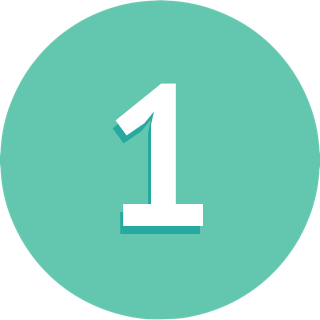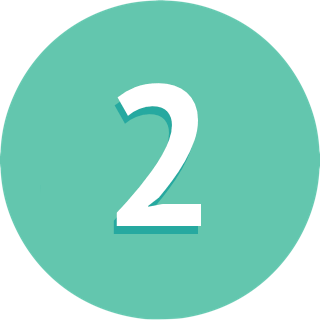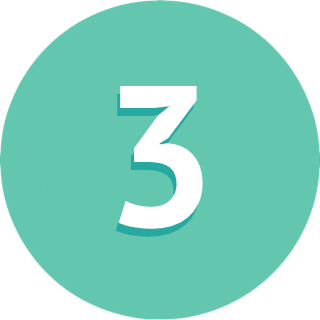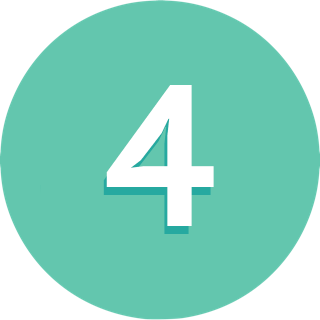Hannah is a recent graduate from Loughborough University, where she studied a BA in English and Sport Science and an MA in Media and Cultural Analysis. Alongside her studies, Hannah was on the editorial teams of several student magazines, and was awarded ‘Best Student Journalist, Midlands’ by SPA in 2018. She was a BBC Sport Kick Off Reporter in 2019 and in 2021, and had co-founded and edited a one-off 40-page print and digital magazine in celebration of International Women’s Day.
August 2, 2022 (Updated )
It’s (still) a relatively weird time. An end to isolation rules has left many of us unsure where we stand with the COVID-19 pandemic, making endless calculations around risk, work-life balance, and what might come next. Were those long dystopian months actually just a series of fever dreams about banana bread, Carole Baskin, and lawyers turning up to virtual court as cats?
Either way, they gave many of us the first taste of working from home – and the chance to keep doing it. Working from home can be a really great thing, but sometimes, it can also be a bit exhausting. So, for those of us looking to make it work longer term, I got stuck into some research about the flexible-looking future of the journalism and media industry, sourcing some useful advice along the way.
The Initial Chaos Of Working From Home
I’ve certainly experienced my fair share of WFH chaos. During the first lockdown, with little warning, I found myself finishing university at my family’s kitchen table, competing against my mum and sister for any available inch of elbow room.

My mum, a primary school teacher, had also chosen the kitchen table as her classroom, thanks to the better Wi-Fi. So, I wrote coursework essays and prepared for my final exams while in the background, my mum enthusiastically read stories about dragons and Daisy who wouldn’t eat her peas — complete with all the voices and sound effects.
My younger sister, the third member of the kitchen table party, had also been thrown into a similar online learning situation, with Covid decimating her sixth form years. She is a fantastic baker and had developed a tendency to stress bake, as many others did during the pandemic. As she Mary Berry-d her way through lockdown, the kitchen became an exceptionally flexible venue. It was a university, a library, a school, a bakery, and an occasional (virtual) pub, rather reminiscent of Hogwarts’ Room of Requirement in its multi-functionality.
Dramatics aside, we truly had no other options. We don’t have great Wi-Fi upstairs nor a proper office space, so our kitchen table — equipped with a kettle and snacks — was our only alternative to a proper working and learning space.

A Hybrid Future For Journalism
Following the success of remote working during the pandemic, Reach PLC, publisher of the Daily Mirror and Daily Express, announced in March last year that three quarters of its staff would permanently work from home. Such decisions became increasingly commonplace; last year, Reuters Institute published a report about the industry-wide shift.
Based on a survey of 132 senior industry leaders from 42 countries and a series of in-depth interviews, the report found that hybrid working seemed to be on course to becoming the norm for the vast majority of journalists in many news organisations. 70 percent of respondents said flexible working made news organisations more efficient through shorter and more business-like meetings. Reduced commute time was also praised for freeing up the capacity for more productive work, and six in ten interviewees also felt that flexible working had, on average, improved employees’ wellbeing.
However, the report also revealed worries about losses to “creativity, communication, and culture” and the practical issue of “proximity bias,” where those physically in the office and therefore “close to decision-makers” could benefit over those working remotely, whose voices can get ignored.


Cheney Hamilton (L) and Amy Marsden (R). Image Credits: Supplied
For journalist and writer Caroline Debarra, WFH is one of the best things to come out of lockdown. However, Debarra does underline the fact that “companies need to be aware that it can be quite lonely” and should “do more to support staff.” In the past, Caroline has previously worked remotely “for companies that insist on touching base daily, holding the occasional party, and also reaching out with phone calls,” which made them feel much more integrated.
Cheney Hamilton, founder and CEO of Find Your Flex, a platform which promotes career accessibility, says using a ‘one size fits all’ solution for post-pandemic flexible working is counterproductive. Find Your Flex began in 2017, following what was described as a “truly god awful start to parenthood” — Cheney’s first daughter was born with hip dysplasia in 2014 and spent most of the first 15 months of her life in a full-body cast.
Hamilton’s employer did not want them to suffer financially on top of everything else, so he allowed her to work only four days while still being paid for five. However, she was refused any flexibility when she had her second child, so Hamilton decided to leave and set up what has now become Find Your Flex.
For her, working from home has clear advantages and shows that companies operate on trust. “The other obvious advantages are for people who have disabilities or health issues which restrict how, where, and when they work, and [also giving] companies access to a much broader talent pool,” she adds.

So, What Has Worked For People?
Staying active was a general theme running through the advice (no pun intended). Writer and marketer Anna Rees has even started squeezing in a 30-minute horse riding lesson into her lunch break, but stresses that a walk around the block will suffice. She says: “I try to use my lunch break to transform my working day […] I’m not saying everyone needs to or can jump on a horse in their lunch break, but stay active!”
Writer Natalie Bickel also praises the outdoors and enjoys working outside as much as possible. If you’re struggling, she says to “grab a mug with fresh pour-over coffee, a chair, and a small side table, and sit on your porch breathing in the fresh air while you work. Get up and take a walk, even if it’s just to the end of your driveway to reset.” And, especially when the days are short, don’t shy away from doing this during your working day. If it makes you more productive, it’s a benefit to everyone.
Sports journalist and Wasps and Leicester Tigers reporter, Bobby Bridge, is straight to the point with his advice. Apart from “an abundance of good quality coffee”, he also says it’s important to find a separate room to work in and create a routine to start and end your day.

The Importance Of Music
For freelance tech journalist and Fit And Well staff writer James Frew, taking some time to organise music into task-themed playlists has helped. “Certain music works better for writing, while admin stuff has a different need. It sounds trivial, but it helps get into the flow of the task quicker and saves time skipping tracks [or] searching for the right song.”
I, a chronic song-skipper, loved James’ idea and decided to create some playlists for JR readers. So here’s a selection of music to suit whatever mood you’re in:
- Coffee Shop Bops
- Deep Focus / Don’t Talk To me, I’ve Got Deadlines
- 4PM Dance Party
- Writing Days
- Admin Tasks
- Job Applications
Want more playlists? Journo Resources members get a new curated playlist every month to help them crack on with work. Sign up here.
Due to associating home with rest, freelance writer Hannah Stobie had initially struggled to work from home. To combat this, she listens to more upbeat tracks during the working day, claiming, “R&B and ‘90s hip-hop work great.” She also changes where she’s physically working halfway through her shift to encourage a more efficient workflow.
Marketer and “Drink & Draw” founder Felicity Blades says that along with endless cups of tea and babysitting her neighbours’ dogs, she schedules a 4pm dance party each day. “Put on a fab song and dance around the living room — it gets the energy levels back up and the stress levels down.”
Writer Holly Landis plays low-level instrumental music to avoid total silence, and deliberately leaves snacks and water downstairs so she has to get up and have a break. She has also found a saviour in the Hotel Chocolat hot chocolate velvetiser, enthusing that “taking the time to treat myself to a homemade, luxurious hot chocolate on a Monday morning has been amazing for both my wallet and mood.”
Similarly, the owner of interiors business Ivy and Bee, Beth Greer, says, “If you can, invest in a good coffee machine.” Greer is currently redecorating her home office, and for others able to have a designated remote workspace, she says to prioritise making it a comfortable space and something that you can “step away from at the end of the day.”

Coffee Shop Vibes And More
Creating a coffee shop ambience at home is a great way to switch things up, slow things down, and save money. Working in an actual coffee shop can be nice too, and you shouldn’t feel guilty for spending money there if your productivity and wellbeing can benefit. This is a cheaper alternative to renting an office space anyway and, according to this BBC Worklife article, some of the most successful people in history have done their best work in coffee shops.
For journalist Amy Marsden, things like “a good thermos flask, warm socks, and 24/7 Spotify” have made a difference. Along with student Hebe O’Rourke, Marsden recommends using the Pomodoro technique, a time management method developed by Francesco Cirillo in the late 1980s.
According to Forbes, the Pomodoro technique is ideal for writing and design tasks and is good for tackling procrastination. You simply pick a task, set a timer for 25 to 30 minutes, and work. When the timer goes off, you take a two- to three-minute break, and repeat. After four sessions, you take a longer break. If you, like me, relish ticking things off your to-do list, you can record each session with a tick in your notebook for extra gratification.
 This piece is part of Reset – a new Journo Resources series about the future of work within the journalism industry.
This piece is part of Reset – a new Journo Resources series about the future of work within the journalism industry.
Our team will be taking deep dives into what’s happening next and how it affects you.
You’ll get insights, advice, and hacks to help you navigate the media industry with the right work-life balance in mind.
Come and see our pieces here or email hannah@journoresources.org.uk if you’ve got an idea you think we should cover.
Being The Encouragement That You Need
The self-complexity theory proposes that we find variety healthy, and when that variety becomes reduced, we become more susceptible to negative feelings. Any anxiety you might experience when working and living in the same spaces are rational. Try to incorporate variety into your day, and don’t feel guilty about personalising the WFH experience for you.
I also love the idea of having a “you’re doing a great job” folder, which houses screenshots of positive feedback, so when you need a confidence boost, you can open up the folder and read them.
Most importantly, wherever you are in your WFH journey, know that you’re not alone. Your experiences are absolutely valid, and you’ve 100 percent got this.






